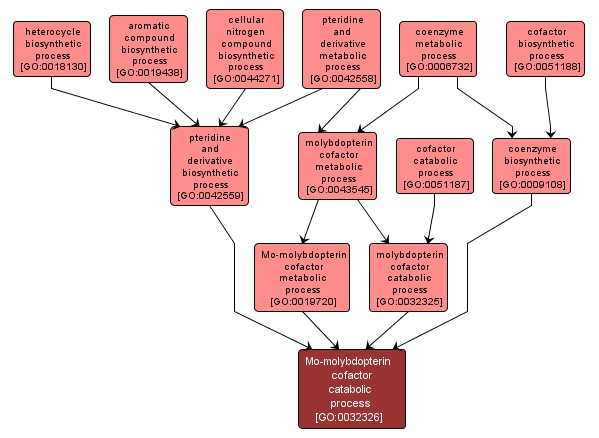GO TERM SUMMARY
|
| Name: |
Mo-molybdopterin cofactor catabolic process |
| Acc: |
GO:0032326 |
| Aspect: |
Biological Process |
| Desc: |
The chemical reactions and pathways resulting in the breakdown of the Mo-molybdopterin cofactor, essential for the catalytic activity of some enzymes. The cofactor consists of a mononuclear molybdenum (Mo) ion coordinated by one or two molybdopterin ligands. |
Synonyms:
- Mo-molybdopterin cofactor catabolism
- Mo-molybdopterin cofactor degradation
- Moco catabolism
- Mo-molybdopterin cofactor breakdown
- Moco catabolic process
|
|

|
INTERACTIVE GO GRAPH
|














